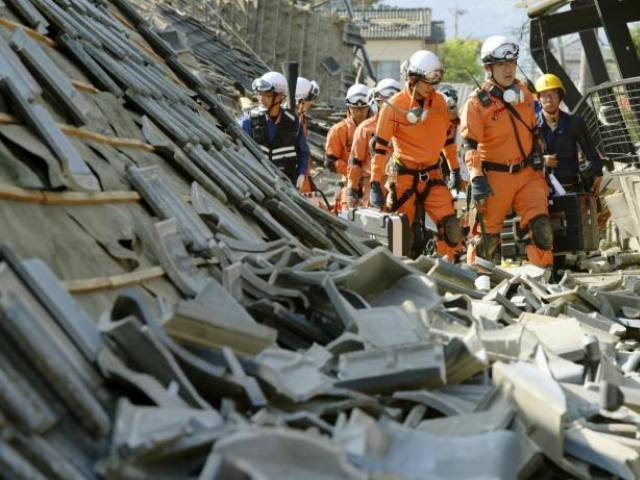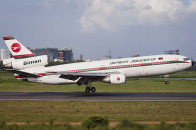Strong quake hits Japan, triggers Fukushima tsunami
National broadcaster NHK urged residents to flee immediately to higher ground

Firefighters walk among collapsed houses caused by an earthquake in southern Japan. PHOTO: REUTERS
National broadcaster NHK urged residents to ‘flee immediately to higher ground, reminding viewers to heed the lessons of the “Great East Japan Earthquake”.
A massive undersea quake with a magnitude of 9.0 that struck in March 2011 unleashed a tsunami that left more than 18,500 people dead or missing. It sent three reactors into meltdown at the Fukushima Daiichi power plant in one of the world’s worst nuclear disasters.
An official from plant operator TEPCO told a news conference that a one-metre wave had hit the coast at the facility, but a company spokesman told AFP there were no reports of damage.
About a dozen other waves were recorded elsewhere on the northeast coast, according to the Meterological Agency, but they were smaller than initial warnings of waves as high as 3.0 metres. The biggest, measuring 1.4 metres, hit the port at Sendai north of Fukushima, but officials said there were no reports of damage there.
The Meterological Agency lifted its final tsunami warning nearly seven hours after the earthquake struck. There were no immediate signs of widespread damage and only minor injuries were initially reported.
Published in The Express Tribune, November 23rd, 2016.



















COMMENTS
Comments are moderated and generally will be posted if they are on-topic and not abusive.
For more information, please see our Comments FAQ